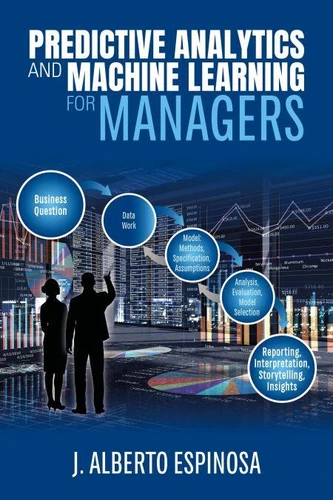Predictive Analytics and Machine Learning for Managers
Par :Formats :
Disponible dans votre compte client Decitre ou Furet du Nord dès validation de votre commande. Le format ePub est :
- Compatible avec une lecture sur My Vivlio (smartphone, tablette, ordinateur)
- Compatible avec une lecture sur liseuses Vivlio
- Pour les liseuses autres que Vivlio, vous devez utiliser le logiciel Adobe Digital Edition. Non compatible avec la lecture sur les liseuses Kindle, Remarkable et Sony
 , qui est-ce ?
, qui est-ce ?Notre partenaire de plateforme de lecture numérique où vous retrouverez l'ensemble de vos ebooks gratuitement
Pour en savoir plus sur nos ebooks, consultez notre aide en ligne ici
- FormatePub
- ISBN8987654309
- EAN9798987654309
- Date de parution20/04/2023
- Protection num.pas de protection
- Infos supplémentairesepub
- ÉditeurJibe4Fun Press
Résumé
This book was written by the architect of two MS Analytics programs and one undergraduate specialization in Business Analytics, with over a decade of experience teaching and practicing predictive analytics, and co-chairing premier academic conference mini-track in this field. The author's goal is to provide strong but understandable conceptual foundations and practical material for graduate students and managers, describing how to frame a business question, identify various model specification (i.e., feature engineering) and model methods (explainable and black box), select the optimal model based on the bias, variance, and cross-validation testing, and interpret results with meaningful storytelling for clients and managers.
The book contains two components: (1) the main text with two sections-one with conceptual, mathematical, and managerial foundations, the other about advanced predictive modeling methods based on machine learning. The main text is further subdivided into two sections-Section 1 contains basic fundamentals of statistics and predictive modeling; Section 2 provides a deeper discussion of machine learning and advance predictive modeling approaches based on machine learning and cross-validation methods; and (2) a free appendix companion with annotated R Markdown code with hands-on applications, posted in GitHub.
The book contains two components: (1) the main text with two sections-one with conceptual, mathematical, and managerial foundations, the other about advanced predictive modeling methods based on machine learning. The main text is further subdivided into two sections-Section 1 contains basic fundamentals of statistics and predictive modeling; Section 2 provides a deeper discussion of machine learning and advance predictive modeling approaches based on machine learning and cross-validation methods; and (2) a free appendix companion with annotated R Markdown code with hands-on applications, posted in GitHub.
This book was written by the architect of two MS Analytics programs and one undergraduate specialization in Business Analytics, with over a decade of experience teaching and practicing predictive analytics, and co-chairing premier academic conference mini-track in this field. The author's goal is to provide strong but understandable conceptual foundations and practical material for graduate students and managers, describing how to frame a business question, identify various model specification (i.e., feature engineering) and model methods (explainable and black box), select the optimal model based on the bias, variance, and cross-validation testing, and interpret results with meaningful storytelling for clients and managers.
The book contains two components: (1) the main text with two sections-one with conceptual, mathematical, and managerial foundations, the other about advanced predictive modeling methods based on machine learning. The main text is further subdivided into two sections-Section 1 contains basic fundamentals of statistics and predictive modeling; Section 2 provides a deeper discussion of machine learning and advance predictive modeling approaches based on machine learning and cross-validation methods; and (2) a free appendix companion with annotated R Markdown code with hands-on applications, posted in GitHub.
The book contains two components: (1) the main text with two sections-one with conceptual, mathematical, and managerial foundations, the other about advanced predictive modeling methods based on machine learning. The main text is further subdivided into two sections-Section 1 contains basic fundamentals of statistics and predictive modeling; Section 2 provides a deeper discussion of machine learning and advance predictive modeling approaches based on machine learning and cross-validation methods; and (2) a free appendix companion with annotated R Markdown code with hands-on applications, posted in GitHub.



